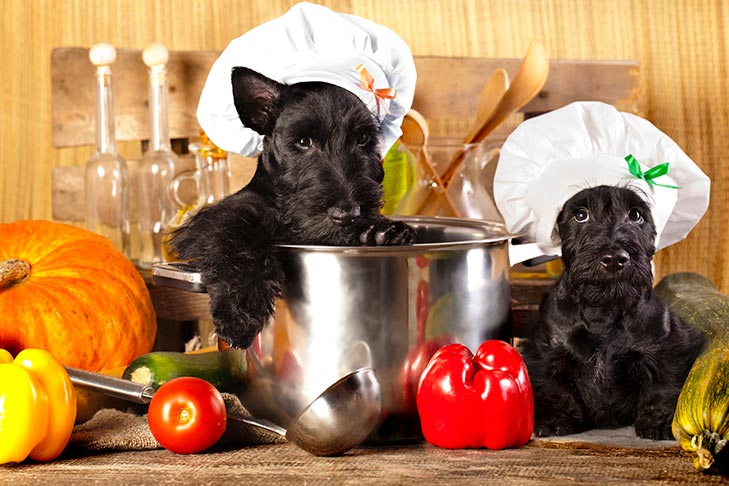For pet owners, it can be difficult to keep track of which foods are harmful to dogs. For example, can dogs eat bell peppers? In this instance, the answer is yes. Bell peppers pack a punch when it comes to nutritional value for both you and your furry friend. “They’re not toxic, and they are a healthy alternative snack to share with your dog,” says Dr. Carly Fox, a staff doctor at New York City’s Animal Medical Center.
Red, Green, Yellow, Orange — Does Color Matter?
Any color bell pepper contains the essential vitamins and nutrients that are beneficial to a dog’s health, although the red type is the most nutritious. “Red bell peppers are the best to feed to your dog because they contain the highest amounts of vitamins and antioxidants,” says Bella Frakes, a dog trainer, and breeder with Mikotusar Kennels and Aviary in Dallas, Texas.
What Are the Health Benefits?
Peppers are rich in vitamins A, E, B6, and lutein and are great sources of vitamin C and beta-carotene, which are antioxidants important for a dog’s healthy immune system, according to Leasa Moltke, a pet nutritionist. “Beta-carotene can be converted into vitamin A in the body and is important for skin, coat, and eye health,” she says.
How Many Bell Peppers Are Safe for Your Dog to Eat?
As with any human food you add into your dog’s diet, bell peppers should be introduced slowly and in moderation to see how he responds. “Some dogs will be fine with it, and some won’t,” says Dr. Fox. She recommends that large dogs eat less than one-half pepper and that small dogs eat less than one-quarter pepper at a time. Consider removing the seeds and stems to prevent indigestion.
If you feed your dog portions in excess of these amounts, he might wind up with an upset stomach, vomiting, and/or diarrhea. “As with other vegetable ingestion, you should take care not to overload your pet, because GI upset can occur,” says Dr. Danel Grimmett, a veterinarian with Sunset Veterinary Clinic in Edmond, Okla.
How Should They Be Prepared?
According to Dr. Fox, you should never add seasoning or salt to the peppers or feed your dog ones that have been mixed with onions or garlic, as those ingredients are toxic to dogs. It’s also important to note that you should never give your pup the spicy varieties, such as jalapeños or Chili peppers.
The outer skin of a bell pepper can be tough and difficult to chew, so you can steam or puree the pepper to make it easier for your dog to consume and digest. Remember to always consult your veterinarian before introducing anything new into your dog’s diet.
Recent Pet Posts
Blog Categories
Product categories
- Accessories (7)
- Chicken & Veggie Wraps (8)
- Grillers Jerky Tenders (4)
- Jerky Treats (10)
- Made in the USA (9)
- Non-Rawhide Treats (28)
- Beggar Bone (11)
- Bully Sticks (4)
- Butcher Bone (4)
- Cod Skin Fish Treats (3)
- Pork Skin Twists (2)
- Pressed Rawhide Bones & Rolls (16)
- Bones & Rolls (6)
- Pressed Rawhide Bulk (6)
- Twist Sticks (4)
- Savory Munchies (13)
- Supreme Bones & Rolls (48)
- American Rawhide Bulk (16)
- Rawhide Bones (14)
- Rawhide Chips (6)
- Rawhide Rolls & Sticks (12)
- Uncategorized (8)



